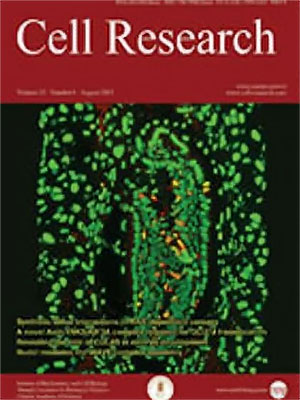
Volume 14, No 6, Dec 2004
ISSN: 1001-0602
EISSN: 1748-7838 2018
impact factor 17.848*
(Clarivate Analytics, 2019)
Volume 14 Issue 6, December 2004: 507-512
ORIGINAL ARTICLES
Identification of differentially expressed genes of primary spermatocyte against round spermatid isolated from human testis using the laser capture microdissection technique
Gang Liang1,4, Xiao dong Zhang1, Lu jing Wang1, Yu shen Sha2, Jian chao Zhang2, Shi ying Miao1, Shu dong Zong2, Lin fang Wang1,*, S.S. Koide3
1National Laboratory Medical Molecular Biology, Institute of Basic Medical Sciences, Chinese Academy of Medical Sciences, Peking Union Medical College, 5 Dong Dan San Tiao, 100005 Beijing, China
2National Research Institute for Family Planning, WHO Collaboration Center for Research in Human Reproduction, Beijing, 12 Da Hui Si, 100081 Beijing, China
3Center for Biomedical Research, Population Council, 1230 York Avenue, New York, NY 10021, USA
4Chinese National Human Genome Center, Beijing, 3-707 North Yong Chang Road BDA, Beijing 100176, China
Correspondence: Lin Fang Wang(wanglf@ms.imicams.ac.cn)
The method of laser capture microdissection (LCM) combined with suppressive subtractive hybridization (SSH) was developed to isolate specific germ cells from human testis sections and to identify the genes expressed during differentiation and development. In the present study, over 10,000 primary spermatocytes and round spermatid cells were successfully isolated by LCM. Using the cDNAs from primary spermatocytes and round spermatids, SSH cDNAs library of primary spermatocyte-specific was constructed. The average insert size of the cDNA isolated from 75 randomly picked white clones was 500 bp, ranging from 250 bp to 1.7 kb. Using the dot-blot method, a total of 421 clones were examined, resulting in the identification of 390 positive clones emitting strong signals. Partial sequence of cDNAs prepared from each clone was determined with an overall success rate of 84.4%. Genes encoding cytochrome c oxidase II and the rescue factor-humanin were most frequently expressed in primary spermatocytes, suggesting their roles involved in meiosis.
FULL TEXT | PDF
Browse 2057


